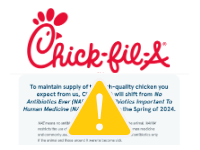With the days getting longer, the sun shining and an upcoming deadline almost complete, I’m feeling very happy. I’ve been cooking alot these days and this is one soup that is very delicious and will make you happy too!
That’s because it contains a fermented food called “Miso.”

What Is Miso?
Honestly, I didn’t know about miso for most of my life. I had heard of miso soup and tried it at various sushi restaurants, but really never knew what it was or if it was good for me or even how to find it at the grocery store. Well, as soon as I started doing some investigating into my own health, I quickly realized that fermented foods like miso were absolutely crucial for a healthy diet.
Miso paste is created from a mixture of soybeans, sea salt and rice koji and then fermented. The fermentation process creates enzyme-rich compounds that are effective in detoxifying and eliminating industrial pollution, radioactivity and artificial chemicals from the soil and food system from your body. It has been used for centuries in asian cultures as a form of probiotics, to strengthen the immune system, and to provide beneficial B12. Miso is very powerful!
Where do I get it?
I remember when I used to scour International grocery stores to find miso. When I did, it would always have a language I couldn’t read and I had no idea how it was produced. Now, thankfully I found an organic brand called “Miso Master” – produced by a small business out of Asheville, NC. You can find it nationwide in the same refrigerated section as other soy products like tofu, tempeh, etc. at the grocery store. They even make one out of chickpeas if you are allergic to soy! The reason I buy organic miso, and organic miso only, is because I do not want to purchase GMOs or soy that have been extracted with a very carcinogenic chemical called hexane (also found in gasoline). Also, Miso Master Organic Miso got an excellent rating from my friends at the organic industry watchdog group, Cornucopia Institute. The report is available here, if you’d like to read it.

Recipe: Miso Happy Soup
I used to order Miso soup when I would go out for sushi, but I don’t anymore. Many of the commercial versions available that restaurants use contain hidden forms of MSG and other additives. I want to eat this superfood without any complications, so I now make the soup myself – it’s hot, comforting and so easy to make!
Food Babe's Miso Happy Soup
Prep Time:
5 mins
Cook Time:
10 mins
Total Time:
15 mins

Ingredients:
- 8 cups filtered water
- 8 nori sheets (dried seaweed), chopped
- ¼ cup mushroom, chopped
- ½ cup miso paste (red or white)
- ¾ cup green onions, chopped
- 1 pinch sea salt
- ¼ cup firm tofu, cubed
Instructions:
- Place water in a large pot and bring to a low simmer.
- Add nori, tofu and mushrooms and simmer for 5-7 minutes.
- In the meantime, place miso paste into a small bowl, add a little hot water and whisk until smooth.
- Then add to the soup with green onions and stir. This will ensure it doesn't clump - it's important not to boil the miso (you don't want to kill the beneficial bacteria).
- Simmer 3 more minutes and serve immediately warm or store later to serve cold.
Notes:
- Recipe goes great with a salad with carrot ginger dressing and quinoa sushi.
- Please choose all organic ingredients if possible
This recipes goes perfect with a salad using my carrot ginger dressing (which also has miso) and homemade quinoa sushi recipes!
Miso happy to share this with you…please share this recipe with others too!
Xo,
Vani








Love reading your emails, recipes and investigative reports!!! Question, how long will the Miso Master Organic Mellow White traditional soy paste keep in the refrigerator once it has been opened?
It keeps forever in the fridge! I buy my organic white miso from a small producer at a farm stand here in NY, and when I first bought it (sold in small mason jars) I asked the owner the same thing, as I live alone and would not use it right away. He told me it would keep forever, and he was right! I love miso, and use it in tons of ways!
I make my own miso a gallon at a time. My daughter and her friends prefers it to store bought
Been having a cup of miso soup every day for the past 4-5 months. Its perfect for that mid morning break. I love it.
It would be great if you could post where you are getting all your facts from. Miso is great but some of your comments are very misleading and inaccurate. If anyone reading your site was smart enough, they would do their own research rather than listening to your bologna.
What exactly did Vani say that was bologna? Making general statements like that show “no class”. If you disagree that’s fine but you should say what you disagree with and give facts.
Though Vivian has an attitude fitting for a child, I do agree with her that Vani’s articles lack references / sources for facts she presents.
You should do you OWN RESEARCH. It is very easy. Here is an example I found, in 23 seconds:
http://healthyeating.sfgate.com/miso-soup-healthy-you-4535.html
If Food Babe posed all the research, we would then have RESEARCH WARS. I have been in several. Nothing ever gets resolved in RESEARCH WARS. Everybody defends their money interest or diet.
Food Babes stuff is to get rid of nasty stuff in the food, where it does not need to be. Food babe really helps here as to secret ingredients. I think that is AWESOME to the MAX.
The main problem is that most foods are becoming contaminated with something, including pesticides. Think about this. In the USA we got reports of ROUNDUP in the rain water, meaning everything is getting pesticides on it.
There is a kid in Canada, that takes a Geiger Counter to the Fish Market, and the freaking thing goes off. That should be what we worry about.
Doing research is really easy. Look for 3 or 4 sources that say the same thing, but not repeating the same article, and you are pretty safe for the most part.
-Trent
I would LOVE to see facts behind these drastic statements!!!!!!
You know, obviously it’s good if your reading it. If you don’t like it, go to a blog you support. But your negative comments are unfounded and certainly not necessary.
Out of curiosity can you point out exactly what comments are VERY inaccurate and misleading? Thank you.
I have to agree. Claims are easily stated and not always backed up. But I like the general idea of staying clean with eating etc.
what about the mercury found in rice? i am pretty concerned about that.
get rice from California, not asia. You can check out the health ranger for research on rice. call the manufactures and find out where they get the rice, or look it up online, then call.
I’m wondering about the koji rice in the miso. Is that one of the rices where we need to worry about arsenic?
Thanks Vani for this wonderful recipe. I think you would be better off to leave out the nori though. I’m not sure why anyone would ever want food products imported from Japan or China in the food we eat.
So,… you think the food we get in the US is 100% genuine, pure and healthy to eat?
Did you know that food fed to cows and pigs is 16% chicken produced waste?
Did you know that fda allows this…? Did you know the pork and bacon you eat has been fed road kill, amoungst other products ..The list goes on and on…..and you are complaining about Japanese and Chinese imports? really ??
Being patriotic is a good thing…being blindingly stupid …now….. that is unforgiveable !
I’m very well aware of what kind of toxins were exposed to in the US. Having said that why would I expose myself to any more toxic byproducts from Japan and China that are tainted for sure? Haven’t you heard about all the dogs that are sick and dying because of the dog treats imported from China? But being the sheeple that you are keep drinking the Fluoride and make sure to get your yearly flu shots. I can see they’re working.
Good since you are aware of the local cr*p we are fed ..why don’t you make it your crusade to sort our your own house.. !
No I do not add or insist on fluoride in my drinking water, simple filtered and boiled suffices~ No I do not purchase meat, eggs or vegetables from supermarkets I produce my own or purchase organically produced products when possible- AND finally no I do not run to the local flu shot providers, I let my immune system do the work… and avoid any locations that may increase the risk to my well being… and before you ask…NO I am not a hermit, I live full and productive life and don’t throw stones whilst living in a glass house !
I don’t care what kind of lifestyle you live sean and really don’t care what you think about mine but do you really think your escaping all the toxins that we are being exposed to? If you said yes then you’re more misinformed than I thought. When are you going to realize the Fukushima radiation is all around us and not only on the west coast? Yes this radiation is falling on your little organic garden as we speak and how are you going to escape that Mr. know it all? You should really know the subject matter before spouting off.
I’ve to agree with Rad, please stay away from any food products imported from
Japan or China.
My point being..as you just agreed in your last response ….before you throw stones at others ..look at your own house… Nothing but contamination all around….and yet you find it easier to blame other countries.. typical ignorant American !
I always learn a lot about what we are eating from your blog. Thank you, Vani!
I love miso soup. It’s my comfort food. Anyway, I just wanted let you know that we (Japanese) don’t use “nori” for miso soup. The seaweed which floating in a bowl is called “wakame”. If you would like to make nice soup stock, I suggest to use “konbu” or/and “bonito flakes” and take them out before you put miso in the soup. That will make big difference.
Why no dashi (kombu+Bonita flake broth) or wakame?? Nori should be eaten dry not wet in soup!
Soy is naturally poisonous, even insects will not go near it. Soy contains natural pesticides and estrogen mimickers, that are not healthy to our body systems. I was wondering why the heck you (or anyone) still eats it?!
My family will only use double fermented soy products as that is the only way to remove the toxic nature of soy and estrogen mimickers.
Which miso is considered the most beneficial in terms of nutrients? I’ve been using barley miso aged for 2 years.
Sorry, but this was horrible. I love miso soup and have made my own before using kombu and bonita base. This sounded so easy and had 4+ stars, so I had to give it a try. It tasted like dirty water sea water. The nori mostly clumped together into a big blob. Didn’t smell or taste appetizing at all. If you want to try a great recipe of Vani’s, try her curry chickpea wrap. My guess is that most of the people rating this 4 stars have not really made it. It’s the only explanation. I enjoy your articles, though, Vani!
Just be creative and adventurous. If nori does not taste good to you in miso soup, try something else. Every individual is different. Nori tastes good for some and not others.
Aside from the usual miso soup from a Japanese restaurant, I had no idea what the health benefits are from true miso. I can’t wait to give this a try, thanks!
Absolutely adore miso, with EXTRA nori in it 🙂 Delicious recipe- I will risk water retention for this! LOL!
I use the miso brand you recommend made with chickpeas and love it. I also stay away from soy.
I love miso soup! I just had some last night with my sushi dinner!
Scrolling through your blog I see so many fresh wholesome foods and it makes me so happy! It’s so refreshing to read all your recipes. I can’t wait to try this soup recipe. I’m a blogger as well with an only slightly different cause…gardening. I love thinking about where food comes from so I work with a company called Cayisa to promote learning gardens, sustainable gardening, and reforestation. They’ve educated 78,000 kids about where their food comes from through their Seed for Seed program! Cayisa also sells some awesome jewerly to support their cause. You should check out the website (www.cayisa.com) and the blog (www.cayisa.wordpress.com)! Thanks!
Hi Vani – I’m concerned about the impact of the Fukushima disaster on all products that are being imported from Japan and Korea. I love nori but Im not sure if we should be eating these products with the info that we have about the radiation contamination levels. What thoughts do have about this?
Looks like I know what I am having for dinner tonite! I don’t even have to buy any ingredients as all of this is in my pantry and fridge. Miso is also a great alternative to salt and adds another dimension of flavour in dressings, soups and sauces in general. It’s used quite a bit in raw cuisine recipes.
If I’m concerned about the health claims or benefits of a natural product, I’ll either make it from scratch or try it myself to see if there are any benefits. You just need to pick your battles when it comes to eating healthy. Anything is better than manufactured or processed. You can only go up from there whether or not your choices are organic.
I think ‘South River Miso’ Is way better…only because they seem to have a longer fermentation process for some of their Miso. They have a 3 year Barley Miso..which has been aged for 3 summers and is organic and completely unpasteurized. Miso master is decent and I have had it, but I am blown away by the South River Miso Company! http://www.southrivermiso.com/
Delicious !!! I was nervous I was going to screw it up, but it’s the best I’ve ever had!
no need to simmer it, just boil the water, turn it off and then add the ingredients, stir and eat. a simmer will still bring it to temperatures that will kill the good bacteria and enzymes. it will still be hot… if you’ve got a small sieve you can just put the miso in it, submerge the bottom of it into the hot water and stir the miso, it will dissolve as you stir it– it’s quicker.
This all sounds good except you should research chromium poisoning from Japanese soybeans.
Hi Vani, Nice website, but wanted you to know that dashi, the stock, is never made from nori. In traditional Japanese cooking, dried bonito flakes, dried shiitake mushrooms, dried small fish and/or kombu (a very thick piece of seaweed) are used.
Miso is very salty, so sea salt is not added. It should not be simmered but added right before or after taking it off the heat.
Here’s a website that has authentic Japanese recipes with great explanations that will tell you all about making proper dashi and miso soup.http://justhungry.com/handbook/cooking-courses/japanese-cooking-101-lesson-1a-making-miso-soup-clear-soup
I thought anything soy is “bad” even if organic?? This recipe uses a soy paste. Sounds so good, but just confused on that part.
Seaweed… could harbor radiation thanks to a large number of countries using the oceans as dump sites. Be careful with that.
Miso soup makes everyone argue. Chill out and eat your soup
I have been looking for a recipe for Miso Soup. I take thyroid medication so I avoid soy at all costs. The medication says to avoid soy isoflavones but I just avoid all soy just incase. I really appreciate it when a recipe uses a certain ingredient, soybeans here, lists alternative ingredientd incase someone cannot eat it it, here it would be chickpeas or barley. I was wondering Also what makes it so salty? Would it be the seaweed or the miso paste? I also really watch my salt/sodium so I would be interested in making it as low in salt/sodium as possible. Thank you in advance for your help.
Love you – Thank you!
Wow, I think I will stay safe and forget the miso soup!
Miso soup is an awesome, healthy, simple food! As other commenters have pointed out, though, for more authentic soup you should add dashi (can get at Asian markets), and wakame is also a common ingredient. I’ve never had miso soup with nori in it, but I guess that could work.
So many negative opinions of those who do not have blogs. Enjoy the thought provoking comments however. I’ve made this 2x. Good. I prefer my stock to be a vegetable base that I add miso to. Its use a preference. Thank You for sharing your knowledge and recipes!!
Thank you Vani, very nice website, recipes. Thank you MichiganGurl for nice straight reply. I personally did not try the recipe and probably will not, but that’s no reason not to read it and tuck it into the grey matter for future reference. I like the idea of miso. I am big on fermented vegetables. So I must try this. I am glad it comes in chickpea as I too avoid all things soy. We here in the Great Lakes region have to be sure to consume iodine as it not in the soil of this region. Thyroid depends on it. Must be very careful about where you find you Iodine. I prefer Nova Scotia dulse usually. I think it is safe. Bless you.
Where are your references?
I have had a container of Miso in my fridge for a LOONNGG time. Does it ever spoil?
Thank you for your great work and recipes! I love that you are so passionate about food and helping others. I wish that those who post negative comments go follow another blog that they 100% believe in. It seems so easy for them to shoot something down when they aren’t looking you in the eye.